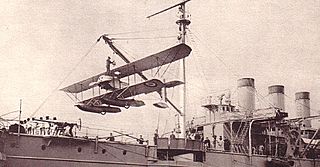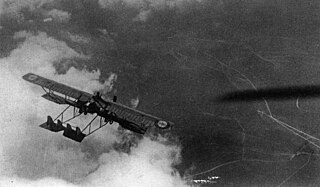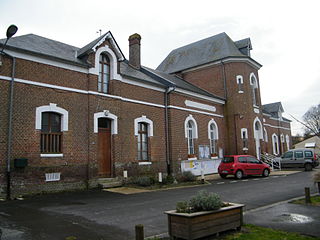Related Research Articles

The Société des Avions Caudron was a French aircraft company founded in 1909 by brothers Gaston Caudron (1882-1915) and René Caudron (1884-1959). It was one of the earliest aircraft manufacturers in France and produced planes for the military in both World War I and World War II.

The Caudron C.60 was a French two-seat biplane of the 1920s and 1930s with a single engine and a canvas-covered fuselage. The French aircraft manufacturer Caudron developed this aircraft from the Caudron C.59. It was mainly used as a trainer aircraft.

The Caudron G.3 was a single-engined French biplane built by Caudron, widely used in World War I as a reconnaissance aircraft and trainer.

The Caudron G.4 was a French biplane with twin engines, widely used during World War I as a bomber aircraft. It was designed by René and Gaston Caudron as an improvement over their single engined Caudron G.3. The aircraft employed wing warping for banking. The first G.4 was built in 1915, and it was manufactured in France, England and Italy.
The Caudron R.4 was a French World War I reconnaissance aircraft.

Favières is a commune in the Somme department in Hauts-de-France in northern France.

The Caudron C.230 was a sporting, touring and trainer aircraft produced in France in 1930. It was a conventional biplane with single-bay, unstaggered wings of equal span. The pilot and a single passenger sat in tandem open cockpits. It featured a wooden fuselage with plywood skin.

The Caudron J Marine was an amphibious, two-seat, biplane equipped with floats and wheels, simiar to the earlier Caudron J floatplane.
The Caudron G.2 was a single-engined French biplane built by Caudron, widely used in World War I as a reconnaissance aircraft and trainer.

The Hydroaéroplane Caudron-Fabre, (Caudron-Fabre), was a French amphibious seaplane which competed in the 1912 Monaco event. It was one of the first true amphibians, able to take-off from water and touch down on land.
The Caudron Type H was a collective name for three different Caudron designs of 1912-3. One of these was an amphibious three seat biplane built for the French military. Two were completed, one appearing at the Paris Aero Salon in November 1912.
The Caudron Type B was a 1911 development of the earliest Caudron type, the Caudron Type A, with a nacelle style fuselage and more powerful engine. Initially an equal span biplane, it was modified into a sesquiplane.
The Caudron C.870 was a training aircraft built by Caudron in the early 1940s.
The Caudron C.680 was a 2-seat sport aircraft built by Caudron in the late 1930s.
The Caudron C.490 was a trainer aircraft built by Caudron in the mid 1930s.
The Caudron Type G was a single-engined French biplane built by Caudron, prior World War I. Developments of the Caudron G saw widespread service in France, Russia and Great Britain.
The Caudron C.51 was a French biplane floatplane made by Caudron in the early 1920s.
The Caudron C.92 was a passenger transport built by Caudron in the late 1920s. It was powered by one 400 hp Lorraine-Dietrich 12 Db. Only one example (F-ESAC/F-AICY) was built, and it was discarded in July 1934.
The Caudron C.98 was a French sports/racing aircraft built by Caudron in the 1920s. Derived from the Caudron C.91, it was powered by a 230 hp Salmson 9 Ab 9-cyl air-cooled radial, and it was intended for the Coupe Zenith race.
References
- ↑ Hauet, André (2001). Les Avions Caudrons. 1. Outreau: Lela Presse. ISBN 2 914017-08-1.
| This article on an aircraft of the 1910s is a stub. You can help Wikipedia by expanding it. |